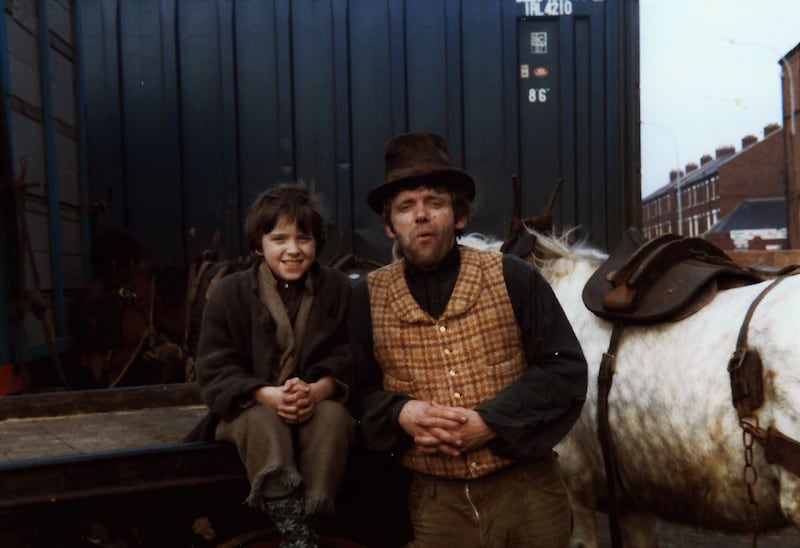Being a projectionist doesn’t suit everyone. I’m 52 and work 11-hour shifts. On the weekends I sometimes don’t see anybody all day – just the tops of people’s heads in the theatres below.
It can be a lonely life for some, but it suits my introverted personality. Without any human distractions I can stay in the projectionist’s booth, watch my favourite scenes unfold and even read a book at night if it’s quiet.
My job is to get the picture on screen, on time, in focus and with subtitles, if there are any – the latter are very important when you show so much world cinema. Day to day, most of what I do is digital, wrangling data into each screen or the central servers, and at times it requires a lot of patience and concentration.
It’s a joy to see people engaged with a great film when I watch for the audience’s reaction. When the credits start in a film, I look down and can see how quick people are to leave, and you can gauge if they’re stunned with a good ending or out the door fast.
RM Block
It’s great to see people back in cinema since the pandemic. It’s taken a year at least since we opened after multiple lockdowns for things to pick up again. But once we show a great film, people turn up.
I haven’t always worked this side of the silver screen. I was born in Cabra and started off as a child actor in the late 1970s, starring in Irish films, television and print ads until the age of 12
Unfortunately, I could be the last generation of this. I survived two Night of the Long Knives-style lay-offs of projectionists across the country since the last recession, and there’s hardly anybody left now or being trained in.
But I haven’t always worked this side of the silver screen. I was born in Cabra and started off as a child actor in the late 1970s, starring in Irish films, television and print ads until the age of 12.
I worked on John Boorman’s 1981 movie Excalibur for three days when I was nine. I was going to the studio in Wicklow at 4am and dressing up as a medieval peasant. It really had an effect on me. I was featured in a scene with Pierce Brosnan in his first American TV show called the Manions of America in 1981; that’s what cemented my love for films.

I served my time in retail in my late teens and early 20s, managing Forbidden Planet comic shop when it opened in 1989, then working for Tower Records in Dublin until it burned down in 1994. I came into work and saw fire engines. I had a one-way ticket to South America already bought, so I left soon after and spent some years in Buenos Aires.
Coming back to Ireland, I got a job at the recently demolished Screen Cinema and worked part-time, scripting some screenplays on the side. I moved around, did almost every job in a cinema.
If you go to a bigger chain of cinemas, there’s nobody up there. It’s all automated and supervised remotely, and sometimes there can be issues and there’s nobody to fix it
Eventually I got a job as a trainee projectionist at Ster Century in Liffey Valley shopping centre, now rebranded to Vue, and spent the best part of a decade there until I left to write full time in 2008.
Bad timing.
Amid the economic downturn, I soon put the writing on the back burner and joined the Irish Film Institute (IFI), where I work now.
If you go to a bigger chain of cinemas, there’s nobody up there. It’s all automated and supervised remotely, and sometimes there can be issues and there’s nobody to fix it. Here, there’s always a human present so the quality is consistent.
I love digital just as much as I love film. We have a mix of equipment here at the IFI, and although film can require that extra bit of care, it’s well worth it. For example, our 70mm projector can play Christopher Nolan’s films, which look fantastic.
Often it’s better to have a projectionist handle the sound too. With films like Apocalypse Now, in that helicopter scene, I absolutely turn it up. And sometimes directors will write to us with specific sound requirements, such as David Lynch or Tár director Todd Field, who used to be a projectionist himself.
It doesn’t get repetitive when you love the film, and especially with films that require a second viewing like Tár. When you fall in love with a film, it’s so good, because every day you come into work and you think: “That film’s going to be on four times today, so I can keep the sound on to listen to the dialogue or music.”
I’ve never been bored in here, ever. There’s always something to do, whether it’s catching a moment in a film that you love or keeping on top all the little tasks. You can come in, put the film on and just listen to the music as you do your maintenance. It’s wonderful art.
In conversation with Conor Capplis













